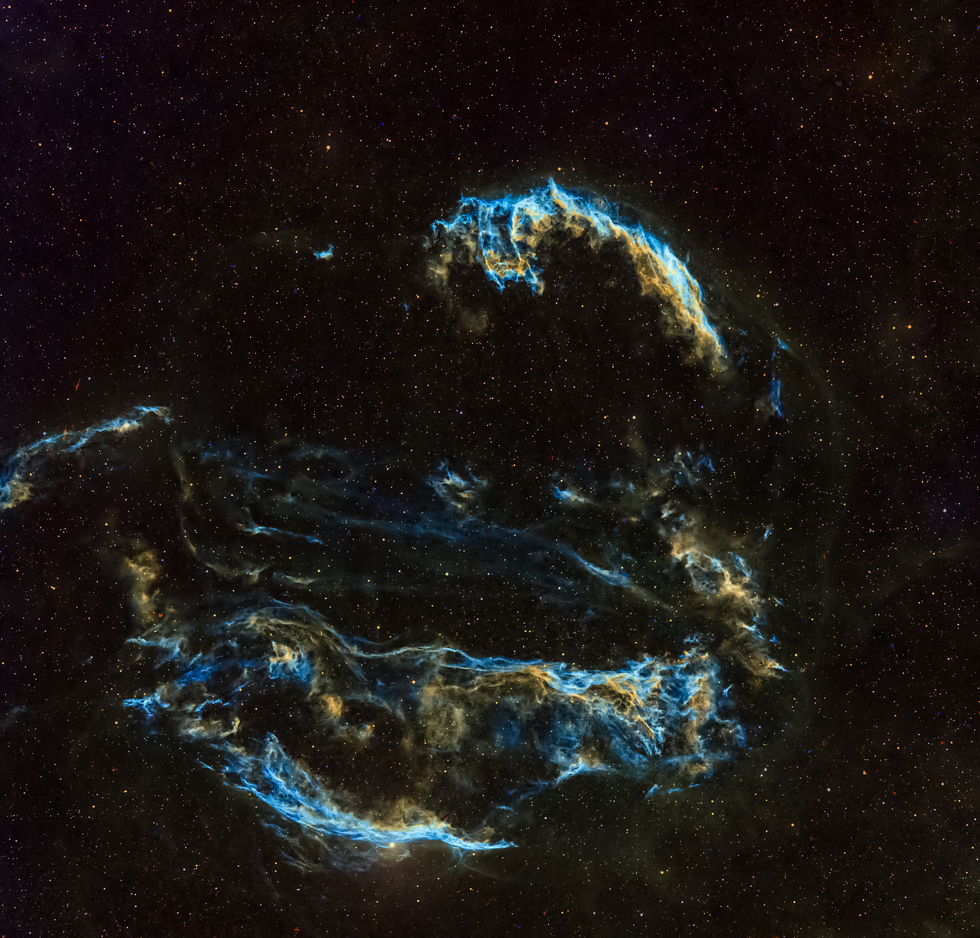Veil Nebula
Veil Nebula
The Veil Nebula (also known by the Caldwell Catalogue acronyms C 33 and C 34) is a large diffuse nebula visible in the southeastern part of the constellation Cygnus.
The distance of the nebula is not known with certainty; data from the Far Ultraviolet Spectroscopic Explorer (FUSE) indicate a distance of about 1,470 light-years. This intricate system of nebulae is visible with binoculars with 80-90mm objectives or with a small telescope as long as you have a dark sky, even better if you use a filter (UHC, OIII): it is best revealed in long exposure photos (even with a CCD camera it takes several minutes). The object will appear to be made up of three very delicate nebulous filaments, arranged to form a sort of circumference. The brightest part is the easternmost part, known as NGC 6992. Increasing magnification reveals that each filament is actually made up of a network of other, smaller, thinner filaments.
The discovery of this object was the work of William Herschel, who in 1784 described it as follows: "Extended; go through 52 Cygni... about 2 degrees in length"; The western part of the nebula has a description of its own: "Branching nebulosity... The next part splits into a few currents that are still gathered to the south."
The distance of the nebula is not known with certainty; data from the Far Ultraviolet Spectroscopic Explorer (FUSE) indicate a distance of about 1,470 light-years. This intricate system of nebulae is visible with binoculars with 80-90mm objectives or with a small telescope as long as you have a dark sky, even better if you use a filter (UHC, OIII): it is best revealed in long exposure photos (even with a CCD camera it takes several minutes). The object will appear to be made up of three very delicate nebulous filaments, arranged to form a sort of circumference. The brightest part is the easternmost part, known as NGC 6992. Increasing magnification reveals that each filament is actually made up of a network of other, smaller, thinner filaments.
The discovery of this object was the work of William Herschel, who in 1784 described it as follows: "Extended; go through 52 Cygni... about 2 degrees in length"; The western part of the nebula has a description of its own: "Branching nebulosity... The next part splits into a few currents that are still gathered to the south."
SPECIFICATIONS
Telescope
SPA-1-CCd
Camera
QHY 600M Pro
Location
IC ASTRONOMY OBSERVATORY, SPAIN
Date of observation
07-15-16-17 / 11-2029
Filters
SHO
Processing
Pixinsight and Photoshop
Credits
Credit Sauro Gaudenzi / Data Telescope Live


